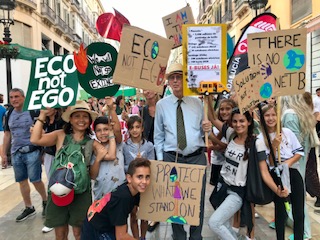This is the second of my three reflections made during this, the last month of RBC’s existence. The first was devoted to Mark Kleiman as a blogger. This one is devoted to my own experience as a blogger. I stipulate at the outset that this reflection may only be of interest to me, but one of the joys of blogging is that you can write posts even if the only person who will benefit is yourself.
How I Got Here and What I Did
I am not sure when I started reading RBC, but it was likely around 2008. Mark already had a strong stable of contributors then (Michael O’Hare, Andy Sabl, Jonathan Zasloff, and Harold Pollack were regulars), in addition to indefatiguably producing his own content. I learned things about public policy regarding crime, drugs, and health from reading RBC that were helpful to me in my work as Senior Drug Policy Advisor in the Obama White House. During my Washington days I also fed Mark some stories and trial balloons that he riffed on in these pages.
When my sabbatical year ended and I moved back to Palo Alto, Mark generously asked me if I wanted to join his crew. He described RBC as a “blogger’s blog” that had a medium sized following — way more than most blogs but way less than the big beasts. But he also said, correctly, that RBC’s work was picked up frequently by national bloggers and traditional media outlets (i.e., in the emerging politics and policy-focused blogosphere, RBC was The New Republic or The Economist rather than Time Magazine or the New York Times). My first post was in August of 2010 and explained my decision to accept Mark’s invitation.
I got into the rhythm of blogging pretty quickly and was active here until Spring of 2014, when I largely moved to Washington Post’s Wonkblog. One thing I worked out over my time at RBC was that more posts = more visitors to the blog. Given that, and the fact that I enjoy writing and even find it relaxing, I wrote a lot during my time here: in one 12 month period, I penned 60% of all RBC posts (to be clear, no one else was skiving off, I just wrote a lot). Despite the fact that some of what I wrote was hot garbage, the expansion of content in that period translated into a significant growth in readership. With I hope pardonable vanity, I am proud to have been a part of the crew that gave this site its biggest audience, not least because that readership growth helped attract Washington Monthly magazine to partner with us in a co-publishing arrangement beginning in 2012 that increased our readership even more (although as I wrote in my reflection on Mark, building an audience from scratch as Mark did is infinitely harder than growing the audience of an existing platform).
Pains and Joys of Blogging Continue reading “Reflections on the End of RBC, Part II: A Personal Perspective on the Pains and Joys of Blogging”









